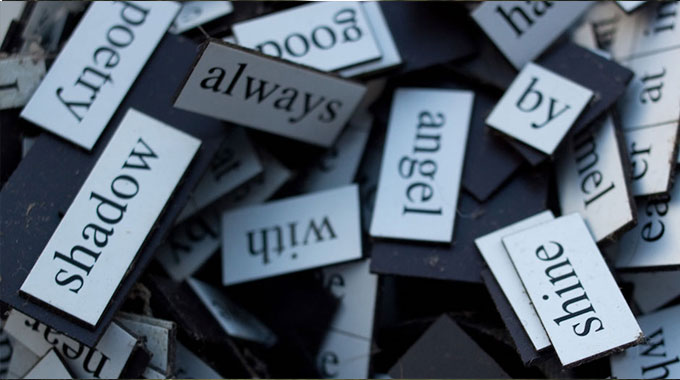
The Sunday News

Charles Dube
VARIOUS ways of starting sentences can help learners put across their messages and capture the reader’s attention. You need to have effective sentence starters. You need to understand how to start sentences in a range of ways to create variety, pace, drama or emphasis in your writing. The way you structure your sentences — particularly the first word or two can influence the way your reader will respond to your ideas.
Before we proceed, let us consider what better writers do as proffered by researchers of repute. Better writers think about the way in which they start their sentences. They use a variety of vocabulary and a number of different grammatical ways to start their sentences. This can give the writing pace, rhythm or emphasis, making it more engaging for readers. Learners could be perhaps asking themselves such a question:
“How can I achieve more sentence variety in my writing?” There are lots of ways to start a sentence. You can use a determiner such as, a, an, the, my, your, his, our, their. For example: The visitor is sitting outside alone. You can start with a pronoun. For instance: I, you, he, she, it, we, and they. Sentence example — They were excited when the visitor came. “They”, is the pronoun. You can also improve your sentence construction by using an adverb or adverbial phrases of manner.
For example, (how?), slowly or quickly. In the same vein you use an adverb or adverbial phrase of place (where?) such as beneath the floor tiles or above the head. An adverb or adverbial phrase of time (when?) can be used, such as occasionally, every evening, that night, today etc. You can use non-finite verbs like running, crawling, cracked. Adjectives also come in handy when improving your writing. Examples: slow, huge, violent, and drunk.
Make use of subordinating or co-ordinating conjunctions like: if, although, as, but, and. This bit about the comma could have come with last week’s article. A comma combines two points. Two sentences can be joined with connectives and sometimes with a comma as well. The most common short connectives are: and, while, so, but, yet and or. Connectives are linking words that join sentences or parts of sentences together. When these words are used to connect two sentences, the comma shows where the next point begins.
Longer linking words, like “however”, “therefore” and “nevertheless” are also followed by a comma when they are at the start of a sentence. Example: However, the court decided to bring the case forward.
Commas can separate information in a list and join sentences. While it is recommended that you can start your sentences with nouns, it is better to use pronouns in your work rather than using the same nouns over and over again. Examiners hate it when you repeat yourself.
Pronouns are words that can be used instead of nouns so you do not keep using the same words. Peter drives to town every day because Peter wants to monitor his business from there. This can be made better by substituting the name Peter with a pronoun “he” where it appears the second time. Peter drives to town every day because he wants to monitor his business from there. Your writing sounds more natural when you use pronouns because you are not repeating yourself.
Pronouns change depending on their function in a sentence. If a pronoun is doing the action it is called the subject of the sentence. If the pronoun is receiving the action it is called the object. Let us examine the following two sentences: I told her. He told her. In the first sentence “I is doing, her is receiving.” You must use I, “you”, “he, she, it” or “they,” if the pronoun is doing something in the sentence.
Pronouns can also show possession. Examples: This book is mine. This is who owns the book. This home is his. This is who owns the home.
Pronouns also change depending on how many people you are talking about. You need to know the different singular and plural pronouns. Here is a list of singular pronouns. The following fall under doing or the subject: I, you, he, she, and it. The pronouns “you” and “it” are the same whether they are the subject or object of a sentence.
Singular pronouns falling under receiving (object) — me, you, him, her, and it. Singular pronouns showing possession: my/mine in the 1st person; your/yours in the 2nd person. These — his, her/hers and its indicate the 3rd person. Use “it” for things that are not people. Use plural pronouns to talk about two or more people or things. Plural pronouns talk about two or more people or things. Examples of plural pronouns: we, you, they, under doing. Under receiving we have –us, you, and them.
The following plural forms show possession: our/ours; your/ yours; their/ theirs. Do not use too many pronouns, it will make your writing confusing for the reader. Make clear at the start of a sentence to whom or what the pronouns are referring. Do not use “me” when you mean “I”. If a pronoun is doing the action, you cannot use “me” — you need “I” instead. For example, it is wrong to say: James and me condemned the action. The sentence should be written this way: James and I condemned the action.
If a pronoun is receiving the action (that is, it comes after the verb), do not use “I” — you need me. Talk to John and “I”. This is wrong. But, talk to James and me is correct.
For views and comments link with charlesdube [email protected] / or sms to 0772113207.



